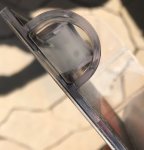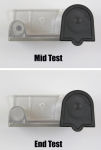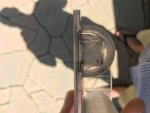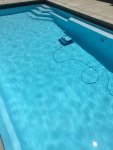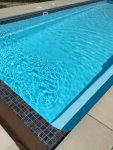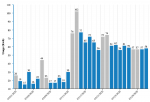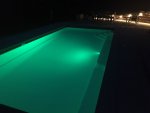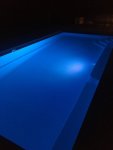Thanks for the great discussion on here. I think I'm starting to understand my situation a bit more. To reply to some other comments above: I'm still running the S200 and I don't have evidence that there is debris on the bottom getting stirred up. I did switch to the ultra fine cartridge filter in the S200 just in case.
I believe my accelerated FC loss in the sunlight is due to having not enough CYA. Today, for example, I noticed a drop from 8.0 ppm to 4.6 ppm in about 2 hours with no evidence of CC but it was with pool in full sun and the the sun directly overhead (between 1:15 and 3:15 PM). After about 6P the pool is in the shade and I see loss more like 0.5 ppm per hour.
Today I also received my pint of CYA reagent and repeated the CYA test. I did this twice. I followed the advice elsewhere on this forum to add the turbid solution to the 50 line, glance with direct sun on the vial for the dot, then fill to 40, repeat, etc. When I do this and also compare with the images on the Taylor web page, I conclude my CYA level is less than 30 ppm. I attach my test image at 30 ppm and the references from Taylor. There is no way I have 50 ppm -- maybe there was some loss since my last test or operator error, like testing in the shade.
So, maybe the cloudy incidents that I've had in the past are just onset of algae problems due to FC loss from UV. When the pool is covered FC loss is less than 1 ppm per day, similar to what JW1 reports. Last year, the pool was covered during peak sun at least 5 days a week as we were at work. Now with COVID-19 it gets opened daily and this, coupled with low CYA may be the difference in chlorine consumption between this year and last year.
I will attempt to increase CYA by 20 ppm and see if that gets me in the 40 ppm - 50 ppm range and then see how consumption changes.
Thanks again for everyone's help.
